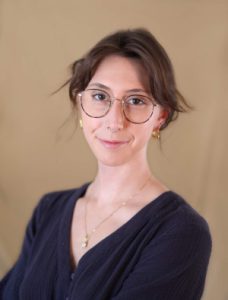Victoria Fisher

Graduate Student
What is your area of research or expertise that you bring to the Landscapes collaboration?
I am a second-year epidemiology master’s student with work experience in the history of structural racism and the built environment, so I strive to bridge a few disciplines through my analysis of residential racial segregation and epigenetic age acceleration.
What do you find challenging or exciting about interdisciplinary collaboration?
Coming from a history- and sociology-driven understanding of structural racism, I’ve found it very difficult to distill this incredibly complex and pervasive exposure into a model. Is that even possible? Maybe we have to chip away at it one measurable exposure at a time, while not forgetting that we’re dealing with real people and real experiences. Having the guidance of both Dr. Bakulski’s team in the epidemiology department and Dr. Hicken’s team in the Landscapes Lab has been invaluable in helping me navigate this complex problem.
What’s one common misconception about your area of research that you’d like to dispel?
Not all epidemiologists study infectious diseases! I get asked a lot of questions about COVID-19. I don’t know anything about infectious diseases (from an epidemiological perspective), but I’ll happily talk to you about life course perspective and cumulative (dis)advantage!
How did you become interested in structural racism and health?
My first job after undergrad was in the architecture and urban design industry at a firm in Boston. Boston is my favorite city in the United States, but it’s suffered from severe residential racial segregation and a housing crisis for a long time. One of the firms I worked for focused on human-centered design, largely drawing on the social determinants of health from a very practice-oriented perspective. I learned a lot about structural racism in the built environment through watching designers interact with historically excluded residents, listen closely to their needs and wants, and create impactful design solutions together. I come from relatively rural Northern Michigan, so while socioeconomic disparities and issues around access and mobility were not new to me, learning about structural racism embodied in the streets and buildings I loved so much was absolutely a “loss of innocence” experience. Looking back, I’m quite embarrassed that I needed a “wake-up call”, but it really did shift my entire focus from writing about other people creating change to helping those people create change.
What’s the academic path that brought you to where you are now?
My path is “serpentine” at best. I entered undergrad at Boston College as a finance and physics double-major…ultimately receiving my degrees in marketing and studio art. After working in the architecture and design industry for a few years, I jumped back into school studying Slavic contact linguistics at the University of Chicago in preparation for a PhD. When the pandemic hit, I reevaluated the skills I wanted to have before committing to a doctoral program, applied to UM School of Public Health and am thoroughly enjoying my newfound quantitative analysis capabilities. I’m currently applying to PhD programs in urban planning, hoping to continue bridging the words of public health and the built environment! I am especially interested in how cities can facilitate healthy aging and how the collision of cultures and geopolitical powers shape urban form and, in turn, health outcomes.
If you had the opportunity to get one question answered by an omniscient being, what would you ask? (this is meant to be a lighthearted question–we’re trying to get to the heart of what you are most curious about, whether within your field of research or beyond! Feel free to think big!)
This is really niche (and a bit petty), but since my linguistics studies have left me curious, I would ask if human language actually has a universal sub-order. After studying Slavic linguistics, I find it difficult to subscribe to Chomsky’s theories of transformative grammar, so it would be nice to prove him wrong on this. But I think he is wonderful, otherwise.
Anything else you want to share?
Slavic language fact!! Czech has no strong prescriptive sentence structure and is largely dependent on its seven cases and 14 declensions to determine the semantic order (those familiar with Latin may balk at this number). Word “scrambling” is observed to a lesser extent in German and a handful of other languages.
